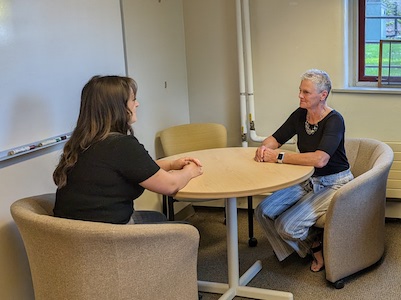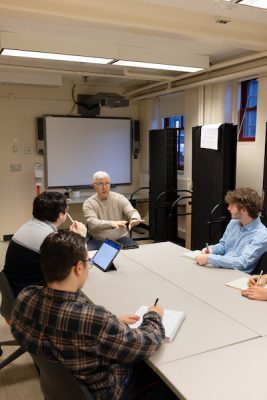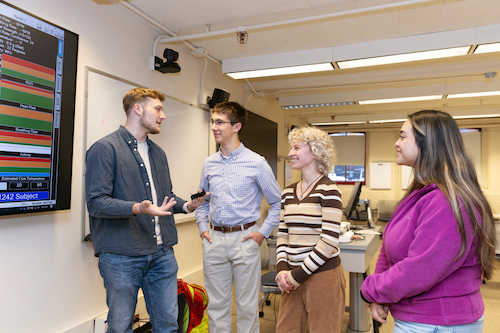Clinical Simulations are recorded, live-actor interactions that approximate challenging situations in a professional setting, using trained actors to portray standardized individuals.
 The School of Education uses Clinical Simulation in many teacher preparation, educational leadership, and counseling programs. This dynamic, effective, and engaging training tool can also be used to prepare professionals from many other disciplines and industries to address common challenges.
The School of Education uses Clinical Simulation in many teacher preparation, educational leadership, and counseling programs. This dynamic, effective, and engaging training tool can also be used to prepare professionals from many other disciplines and industries to address common challenges.
Why “clinical”? The name is a nod to medical education—the simulations used in medical preparation inspired the use of simulations in educator preparation. “Clinical” also points to the use of data in each simulation: in preparation, gathered during, and derived.
“Our focus is not about how we believe we did or what we think we said, but on the data—what we actually said and did in the moment—and the implications of those practices on the student, and the broader school community. Our clinical focus is on the analysis of practice and data-informed decision making.”
Professor Ben Dotger
 As an adaptable, scalable, and highly effective experiential pedagogy, Clinical Simulations:
As an adaptable, scalable, and highly effective experiential pedagogy, Clinical Simulations:

A typical step-by-step process for a Clinical Simulation:

“Today in student teacher placement, I had my first ever round of parent/teacher conferences, and I just wanted to reach out and tell you how much clinical simulations helped prepare me! While I was not the primary teacher of the class, I still felt really comfortable speaking to all different types of parents, and I was prepared.”
Brad Schlapak ’24
